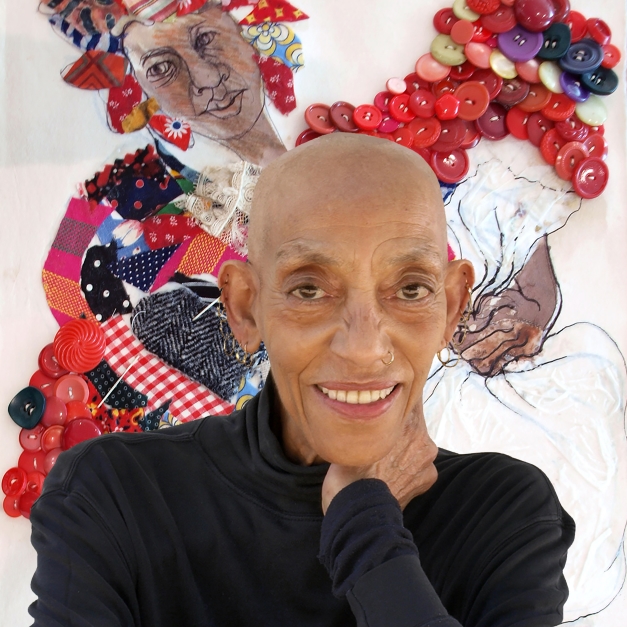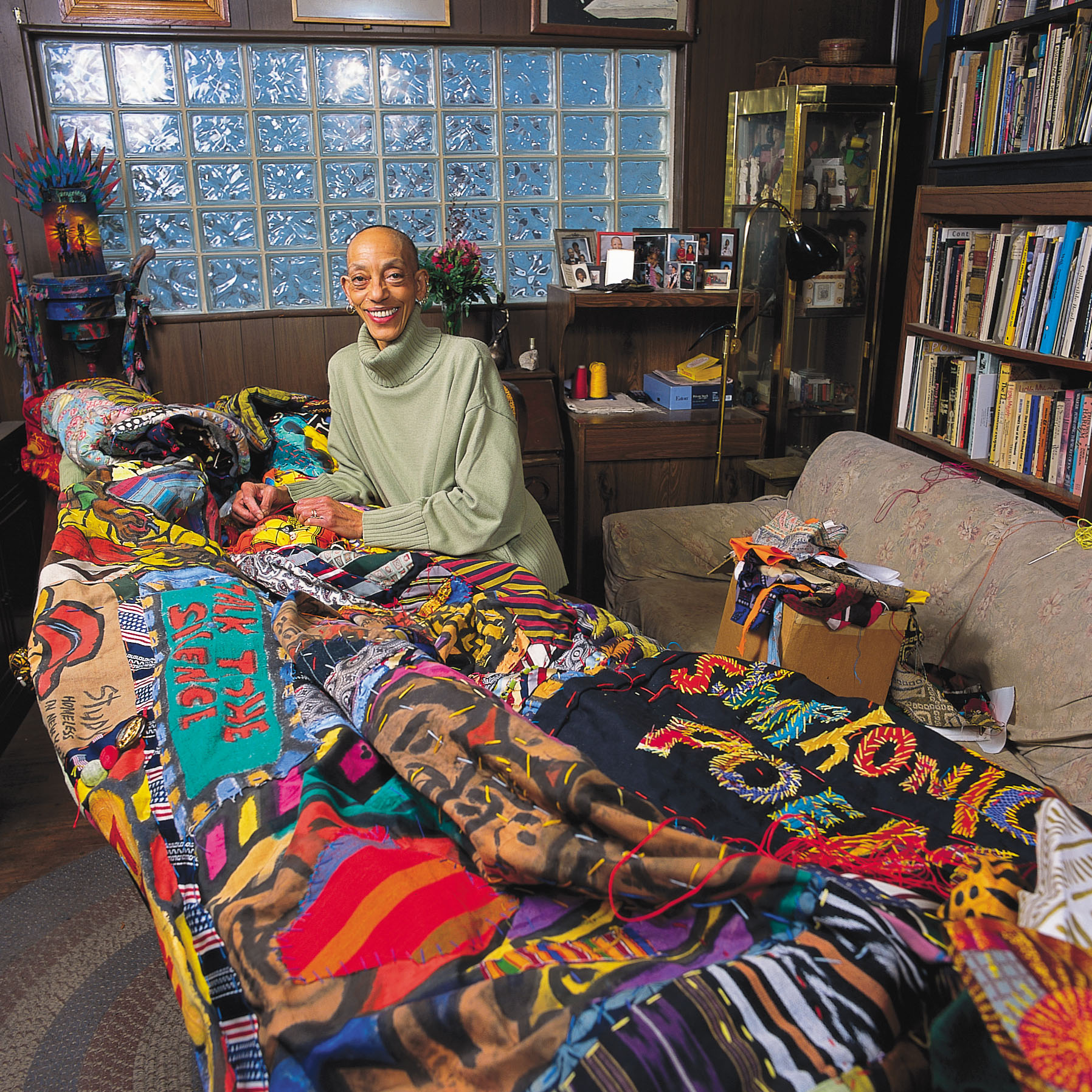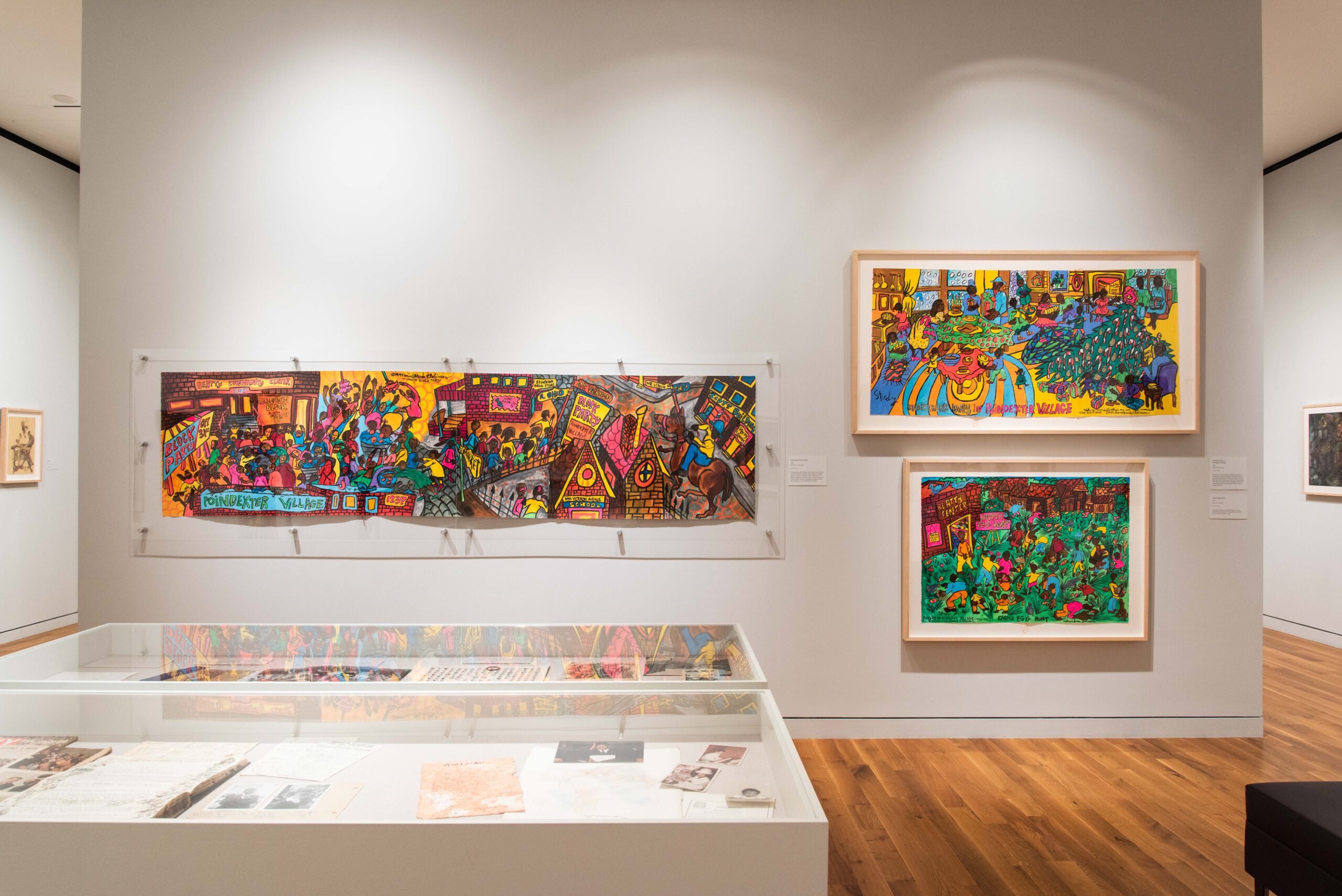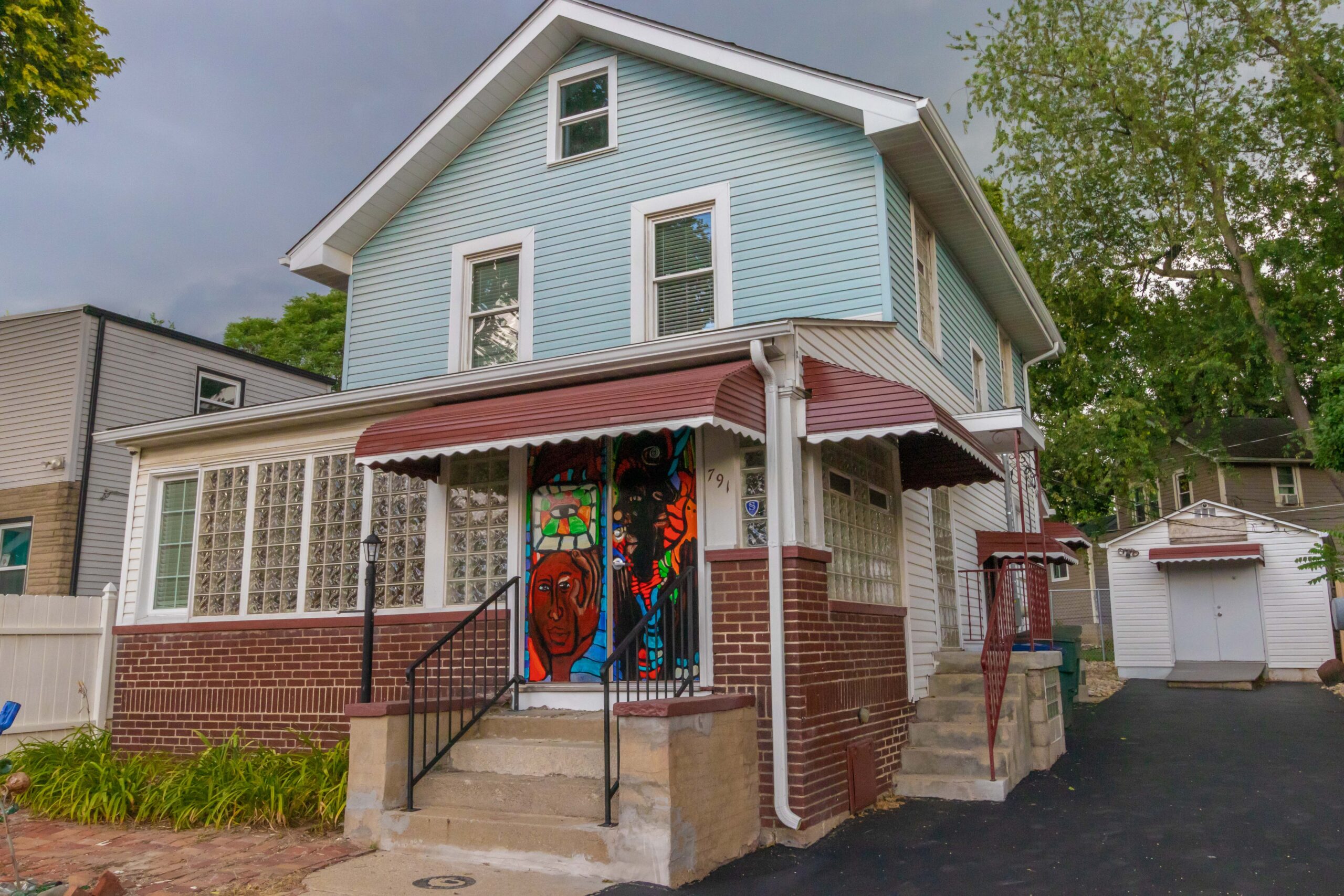Aminah Robinson Legacy Project


Aminah Brenda Lynn Robinson, 1940–2015
When Aminah Brenda Lynn Robinson passed away in 2015, she left her art, writings, home, and personal property to the Columbus Museum of Art (CMA). In 2020, CMA established the Aminah Robinson Legacy Project to encompass the myriad aspects of her life, proliferate awareness of her work, and place her in the pantheon of the most important twentieth and twenty-first-century American artists where she deservedly belongs.
Biography
Throughout her life, Columbus, Ohio artist Aminah Brenda Lynn Robinson created work that is all about journeys and bridges and connections. While Robinson was born in Columbus, her story begins with her ancestors in Angola, Africa before enslavement, their experiences of the Middle Passage, their struggles as enslaved peoples, their liberation, their migration north to escape the Jim Crow south, and their triumphs settling in Columbus, Ohio. Her work is her personal story and, at the same time, a template for universal stories of people of African descent all over the world.
As a very young child, art was an intrinsic part of Robinson’s life. She was nurtured by her mother who taught her needle and button work while her father taught her to draw, make books from homemade paper, and sculpt using a homemade material they called “hogmawg,” a collection of mud, clay, twigs, leaves, lime, animal grease, and glue. Robinson created her own artistic vocabulary combining these handed down traditions with personal research and formal art training at the Columbus Art School (now the Columbus College of Art and Design). Her monumental “RagGonNons” are fabric “chapters” stitched together that “rag on and on” capturing stories of her ancestors, the history of Columbus, and the essence of her travels in the United States and abroad. Her “Manuscript Pages,” pen and ink and pastel drawings, depict accomplished African American women, Civil Rights leaders and events, and the highly regarded elders of her family and community. Her “button-beaded, music box” RagGonNon tapestries, mixed media sculptures, layered rag paintings, one-of-a-kind books and dolls, bold woodcut prints, and sensitive drawings on parchment and handmade paper depict generations of people, cultures and communities and are an inspiring legacy for us all.
Robinson, a 2004 recipient of the MacArthur Fellowship, created works that reside in the permanent collection at CMA and in museums and private collections around the world.
Aminah Robinson Legacy Project
The Aminah Robinson Legacy Project is a multifaceted effort to preserve and promote the artist’s work through documentation, preservation, and exhibition of her art and writings, providing her home as a residency and studio for artists and writers, and building upon her legacy through scholarship, publications, learning and engagement programs, and educational resources.

Raggin’ On exhibition image by Kara Gut
I. Documentation, Preservation, and Exhibitions
From 2015 to 2020, CMA staff moved the vast amount of art, writings, books, hand-illustrated journals, and furniture from Robinson’s Shepard Neighborhood house to a secure, temperature- and humidity-controlled storage facility. Many of Robinson’s journals were digitalized and all the works removed from the house were photographed and archived.
Amid the rise of the Covid-19 pandemic, CMA presented Raggin’ On: The Art of Aminah Brenda Lynn Robinson’s House and Journals (November 18, 2020–October 3, 2021), a survey exhibition based upon Robinson’s art and writings found in her home. The accompanying publication won a 2021 Ohioana Book Award.
Aminah Robinson: Journeys Home, a Visual Memoir is an exhibition touring nationally that celebrates the prolific life and work of Aminah Brenda Lynn Robinson (1940–2015).
Supported by the Art Bridges Foundation, Aminah Robinson: Journeys Home, a Visual Memoir brings together a selection of profound artworks and writing from Robinson’s staggering seven-decade practice, from 1948 to 2015, in a visual memoir of the artist’s life and a compelling tableau of the African American experience. The traveling exhibition is organized into four thematic sections—Childhood Home, Ancestral Home, Spiritual Home, and Journeys Home—inviting visitors into an intimate experience of Robinson’s vibrant world of storytelling through mixed media.
Upcoming Exhibition Dates
Springfield Museum of Art, Springfield, Ohio
February 1–July 13, 2025
The Newark Museum of Art, Newark, New Jersey
October 16, 2025–March 1, 2026
Mobile Museum of Art, Mobile, Alabama
March 26, 2026–January 9, 2027
Later venues will be announced. Read the full press release here.

Aminah Robinson Home, Photo Ira Graham
II. Renovation and Support of the Home Studio
Through the support of The Columbus Foundation, the renovation of Robinson’s home studio was undertaken with two goals: the preservation of the artist’s spirit and the realization of a workable and livable space for artist residents. Careful attention was paid to retain Robinson’s hand in the artistic details of the home studio: a mosaic Robinson created on the kitchen floor, her drawings on the kitchen cabinets, hand-written notes on the walls from guests, the paint-splattered dining room floor (her first studio), and painted and carved exterior and interior doors were carefully preserved.
In 2020, the home studio received an Ohio Historical Marker designation, and in 2022, the National Trust for Historic Preservation’s Historic Artists’ Homes and Studios program awarded the Aminah Robinson Home Studio one of only six places in its first class of affiliate memberships. A virtual tour of the renovated home studio is available here.

III. Artist Fellowships and Residencies
Robinson was clear that she wanted her home maintained as a place for artists’ research, inspiration, and creativity. In 2017, a committee of community advisors met and voted unanimously to renovate the house and establish it as an artist/scholar residency. In 2020, CMA and Greater Columbus Arts Council formed a partnership to support an annual resident selected from a national pool of African American artists and a fellow selected from a local pool of African American artists to live and/or work in Robinson’s home studio, receive an award of $15,000, and an opportunity to present their art in the Columbus community. In 2022, CMA instituted the Aminah Robinson Residency Program for African American writers, scholars, and researchers to honor Robinson’s strong research and writing legacy.
To date, awardees include DonCee Coulter (2020 Artist Fellow), Johnathan Payne (2021 Artist Resident), Wendy Kendrick (2021 Artist Fellow), Richard Duarte Brown (2022 Artist Fellow), Darlene Taylor (2022 Writer Resident), Anthony Peyton Young (2022 Artist Resident), Beverly Whiteside (2023 Artist Fellow), Allie Martin (2023 Writer Resident), Marla McLeod (2023 Artist Resident), Jana Cardwell (2024 Artist Fellow), A.J. Verdelle (2024 Writer Resident), Warith Taha (2024 Artist Resident), Jared Thorne (2025 Artist Fellow), and Raeghan Buchanan (2025 Writer Resident).
2025 Aminah Robinson Artist Residency
Application open from March 3–April 1, 2025
